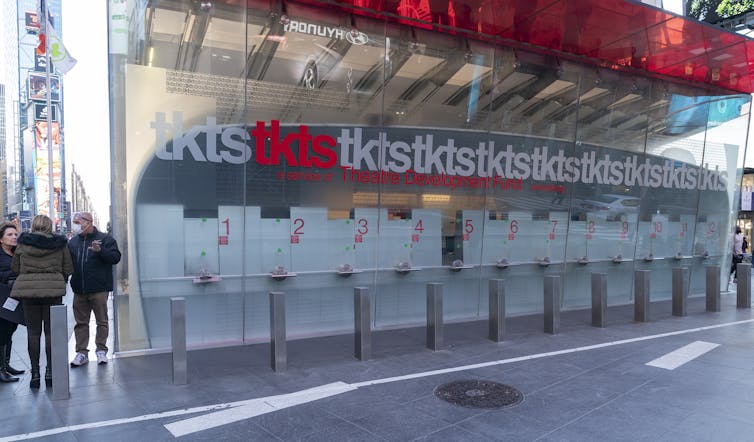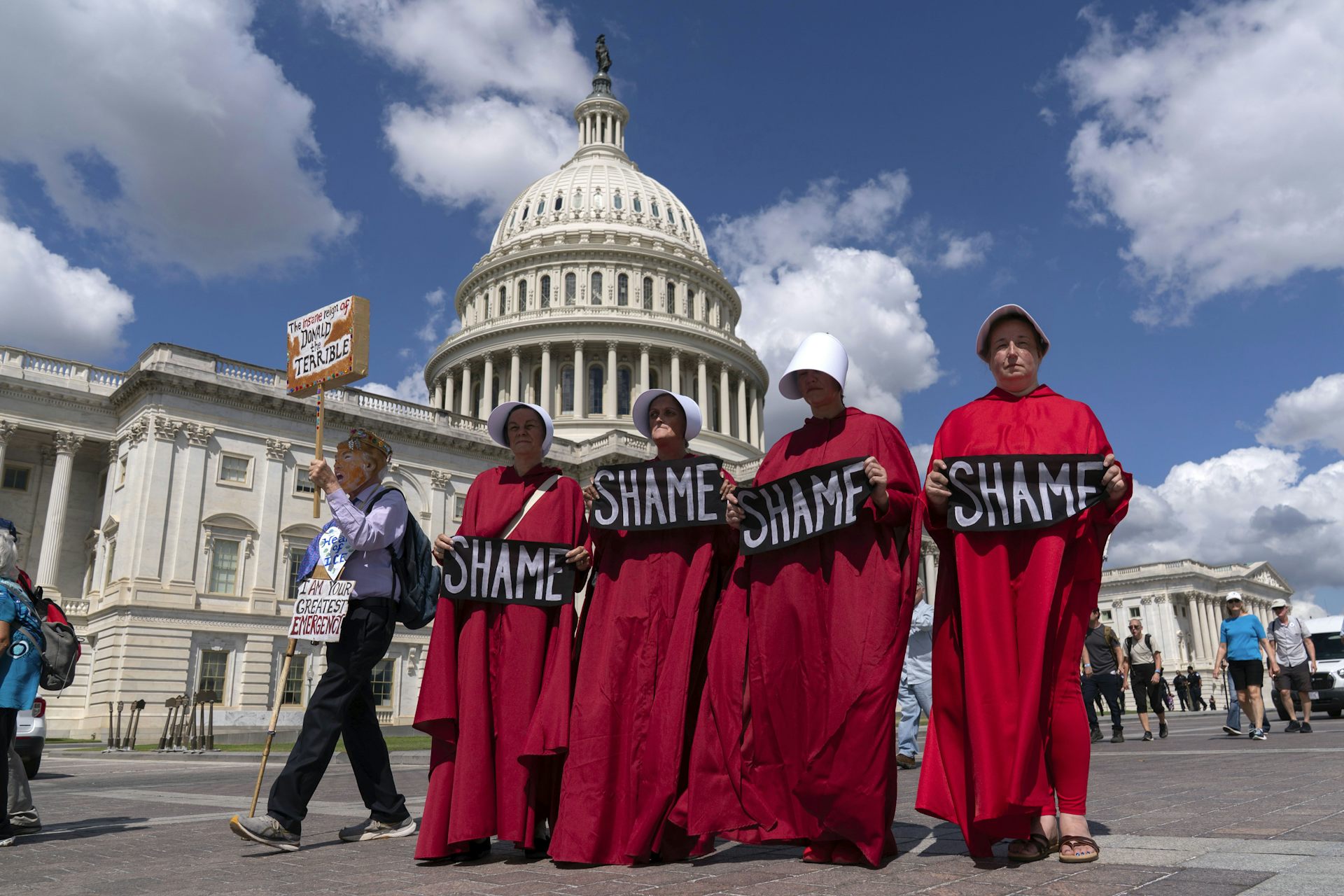People have had a hard time weighing pandemic risks because they haven't gotten information they nee
People have a hard time assessing risk in the best of times. Adding a world-changing pandemic with evolving and sometimes conflicting information has made personal risk assessment much harder.

The decision to pause and then restart the Johnson & Johnson vaccine underscores how hard it is even for experts to gauge health risks. It’s been still harder for everyday people, most of whom have no medical background and little experience analyzing risks and benefits.
People have experienced confusion about mask-wearing, physical distancing, travel, remote work, financial assistance measures and more. Now people are weighing uncertainty about vaccines. Further, some members of historically marginalized groups are skeptical of vaccine safety, as retired NFL star Marshawn Lynch detailed in a recent interview with Dr. Anthony Fauci, chief medical adviser to President Biden.
We are informatics and regulation researchers who study intersections among information, policy and human behavior. We have recently studied the intensive “risk work” individuals are doing amid the COVID-19 pandemic. Our research, which is scheduled to be published next month, provides insight into how people in the U.S. perceive pandemic-related risks and how they draw on information to assess and manage them.
Worry beyond COVID-19
To understand people’s perceptions of risk, we conducted interviews that allowed people to explain their beliefs and experiences in detail. We recruited this sample using nationwide group email lists and social media. Based on an initial short intake form, we selected participants to create a sample that was diverse in terms of age, geographic location and self-reported difficulties that people were facing during the pandemic. We conducted interviews with 40 people, and we paid them for their time.
These interviews revealed that people conceive of COVID-19 risks as more diverse and complex than popular narratives about managing “health versus the economy” suggest.
Though illness and economic risks were dominant concerns of our interviewees, people also spoke about risks from secondary illness, threats to social and behavioral well-being and the erosion of key institutions.
Risk of COVID-19 illness included apprehension about the prospect of being unwell, suffering with a severe disease and dying. Participants worried about becoming severely sick with COVID-19, but they differed in their perceptions of who was more likely to become gravely ill. There was general agreement that elderly people and people who had underlying medical conditions were at higher risk.
Wanting to know which groups were especially “at risk” was very important for many people we interviewed. They talked about dangers of illness for “society,” “everyone,” “elderly people,” and “people in a certain socioeconomic group.” They also discussed risks to themselves or their close social contacts, such as references to “my dad who is elderly and sick” and “my son-in-law who is a deputy sheriff and encounters homeless people with COVID symptoms.”
Concern about other illnesses and stress
Participants associated “secondary” illness risks with health care resource shortages. Many described the increased likelihood of death from other serious conditions if the health care system became overrun with COVID-19 patients. They understood that an overstretched system would not be able to provide normal levels of care and that it also meant that patients would be more likely to suffer or die.
They described multiple interrelated threats to social and behavioral well-being. Social and behavioral risks included things like anxiety, depression, stress, damaged relationships and career setbacks. Mental illness, for example, emerged as a potential risk from widespread and personal social isolation, which could lead to loneliness and depression.
Interviewees understood estrangement in personal relationships as a risk for themselves and others. A grandmother who used to take care of her grandchild two days a week thought her personal relationship with her young granddaughter could fray through the lack of in-person contact during the pandemic. Other participants felt there was a risk in terms of delays in life trajectories – for example, careers derailed or set back years and developmental delays among children whose schooling was canceled or altered.
Economic risks spanned concerns about job and income loss, recession and the inability to find work. As with illness risks, participants framed economic risk both broadly in terms of society and specifically in relation to certain populations they perceived as being “at-risk,” such as recent graduates, millennials, business owners and poor people.
Many participants characterized the wider economic implications as potentially disastrous, explaining the risks as similar to or greater than the virus itself. Some even described an economic threat that could dwarf the Great Depression of the 1930s or the global financial crisis of 2007-2008. They also mentioned specific threats, such as business closures, sweeping losses to retirement income and declines in home values.

Changes to institutions, and even the arts
Another identified risk was crumbling institutions. Participants saw the pandemic as a threat to public health, the health care system, educational systems, the arts, the federal government and business. They believed that if these systems fell apart there would be long-term ramifications. As a 22-year-old resident of Arizona said, “I was more worried about the societal changes than the actual virus, if that makes sense.”
Many interviewees reflected on institutional failures. For example, one participant, interviewed in 2020, explained how the pandemic had led to a crisis of leadership for the country, with states left to fend for themselves to manage the effects of COVID-19 without adequate federal support. Others felt that institutions being at risk meant core rights and privileges that Americans typically enjoyed – such as privacy – were also at risk.
[The Conversation’s science, health and technology editors pick their favorite stories. Weekly on Wednesdays.]
Helping people manage COVID-19 risks
Our participants reported that most of the information about COVID-19 risks available to them addressed only COVID-19 illness and not other types of risks associated with the pandemic, and often contained conflicting recommendations. As a result, our participants said they received little helpful information about how to manage the multiple forms of risk they were perceiving.
According to our research, not having information to validate these other perceived risks had a spillover effect: It fueled a sense that authorities were not addressing urgent threats. Advice on managing COVID-19 illness that fails to acknowledge other risks contributes to a loss of trust and, in turn, may undermine compliance with guidelines.
Studies show that people perceive messaging about COVID-19 to be fragmented and conflicted. This is dangerous, because past studies show that exposure to health massages that are conflicting leads to decreased trust in authoritative sources of information. Our findings led us to the same conclusion. They made clear that the issue is even broader, because people are receiving inadequate information about multiple pandemic risks, not just COVID-19 illness.
In addition, our participants said that authoritative sources of risk information tend to be too general. People said that they often turned to individuals in their social networks to help them obtain relevant information and better understand risk – for example, a cousin who is a nurse working on the front lines.
We found that these informal communications with experts are important but often overlooked. Acknowledging the informal work that these experts do and developing strategies to support this labor could inform individuals’ risk management. It could also alleviate anxiety during this uncertain time.
For example, clinicians receive information updates from local, state and national health agencies and the organizations where they practice. Clinicians often translate this information for their social contacts through informal communications. Alongside clinical updates, they could receive information sheets describing COVID-19 risks and risk management strategies that they could distribute via social media and other channels to their networks. Picture an easily understandable breakdown of the risks and benefits of the Johnson & Johnson vaccine that clinicians could share broadly with the click of a button to group chats and social media accounts.
Kathryn Henne receives funding from the Australian National University Futures Scheme.
Kathleen H. Pine and Myeong Lee do not work for, consult, own shares in or receive funding from any company or organization that would benefit from this article, and have disclosed no relevant affiliations beyond their academic appointment.
Read These Next
New Pentagon policy is an unprecedented attempt to undermine press freedom
Free press advocates warn that limiting how journalists cover the Defense Department hampers the stability…
Banning abortion is a hallmark of authoritarian regimes
Banning abortion instantly oppresses a huge swath of society. And enforcing abortion bans begets a police…
Why countries struggle to quit fossil fuels, despite higher costs and 30 years of climate talks and
The International Energy Agency expects global renewable energy capacity to double by 2030, even with…





